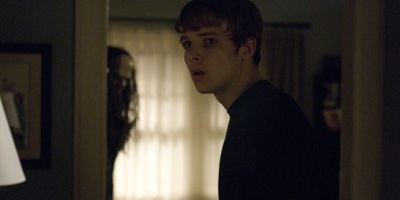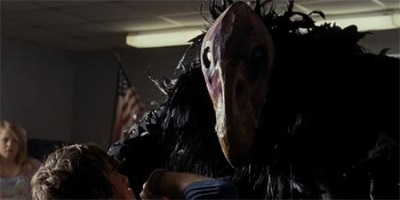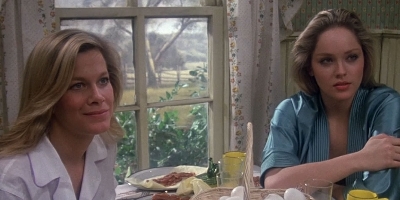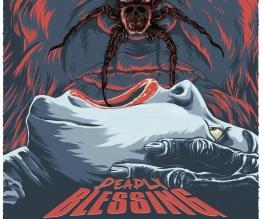My Soul To Take

My Soul To Take is the first film that Craven has both written and directed since New Nightmare, and explores the fictional urban legend of the Riverton Ripper – a serial killer plagued by more than simple psychopathology. Following the gratuitously bloody trail of The Ripper as he returns to his hometown to stalk seven teens – each of whom ‘spookily’ share the same birthday as the date he was allegedly put to rest – the story begins and ends on the anniversary of “The Ripper”‘s death and the “Riverton Seven”‘s birthday. On this night the stripling septet gather together to symbolically slay the Ripper and drive him back to the land of the dead. The Ripper, in this case, is a gargantuan, cardboarded effigy constructed by the teens themselves, but when one of the seven fails to follow through with tradition, the serial killer facsimile is brought to life to resume the hunt.
Craven has described the killer as “a figure who lives under the river”, eats bark, and parades through the woods – and that, along with the frightening notion of paper-mâchéd appendages en masse,is for all intents and purposes, as thrilling (and coherent) as this slasher-wannabe gets. Throughout the film, the shaky reasoning for the ‘uncanny’ connection between The Ripper and his teenaged fodder staggers back and forth between psychoanalytics and voodoo, as if the two diametrically opposed explanations are interchangeable. Craven seems undecided as to whether the killer should suffer from multiple personality disorder, schizophrenia, demonic possession or a more generalised esoteric affliction of undefined parameters, and subsequently burdens The Ripper with all four options. The lumbering puppetman/ Jigsaw-on-‘roids kills his way through a blurred reel of unforgettable scenes and even less memorable characters, and appears just as confused as we are as to what the actual motivation for his vitriolic rampage is. The protagonist, Bug (Thieriot) – who is singlehandedly responsible for saving his pubescent peers from certain evisceration – seems as similarly unconvinced (and unconvincing), much to the gory detriment of his pals.

The only semblance of continuity is Craven’s obsession with macabre mythology; the idea of wayward souls, lunacy and mass hysteria liberally manifest themselves in the iconic black bird motif – from references to Hitchcock’s The Birds and Edgar Allan Poe’s The Raven, to one of the characters fancying himself the reincarnation of a carrion/death eater and another frolicking in a one-man bird-pantomime (there is the distinctly sickening sense that Alex Proyas’s The Crow is caught in the feathered massacre somewhere too). Sadly, the winged imagery is haphazardly strewn about the storyline with little regard for relevance, and the result is a plot stifled by symbolism and wanting for substance.

In theory, the concept of possession versus pathology should be an intriguing one, but winds up utterly convoluted in Craven’s conversion to celluloid. He appears to have limited interest in developing the idea – or the dialogue – and one is left wondering if – much like The Ripper – the spirit of the real Wes Craven has simultaneously disembarked the host and the project.

The soulless film is little more than a smorgasbord of clichéd parts and contrived scare-tactics, and marks a tragically unceremonious return of Craven. Any other writer/director of such an atrocity would have been granted a stay of execution, but this guy has 40 years on the competition and not one good enough excuse.





Recent Comments